Introduction to lady finger plant diseases, pests and control methods: Okra (Abelmoschus esculentus L) is also known as bhindi or lady’s finger belonging to family Malvaceae. Okra plant is easy to grow and use and looks lovely throughout the growing season due to its beautiful flowers. It is also rich in vitamin A and low in calories, which makes it a great addition to your diet.
This disease and pests information can be applied to growing lady finger plants on terrace, growing lady finger plants in pots/containers, growing lady finger plants in balcony, growing lady finger plants in backyards, growing lady finger plants outdoors, growing lady finger plants indoors. Let us begin with lady finger plant diseases and thier control measures.
A guide to lady finger plant diseases, pests and control measures
You can apply this pests and diseases information for growing okra in pots, growing okra on the terrace, growing okra in the backyard, growing okra in the balcony, growing okra indoors, growing okra in open fields, growing okra from seed, and growing okra outdoors, growing okra from cuttings.
In this article we also discussed the following topics;
- Time to take for growing okra
- Soil pH for growing okra
- Okra seed germination
- Temperature for growing okra
- okra plant to plant spacing
- Effect of pests and diseases in okra
- Okra plant spacing in rows
Okra/lady fingers growing conditions
Okra is known to grow in poor soils but it does best in good soils with plenty of organic material that is not too rich. Too much nitrogen effects in strong vegetative growth but fewer blooms, which mean fewer seed pods. Work organic compost into the soil the fall before spring planting and allow it time to age before planting. As with all garden vegetables, good water retention and drainage is very important.
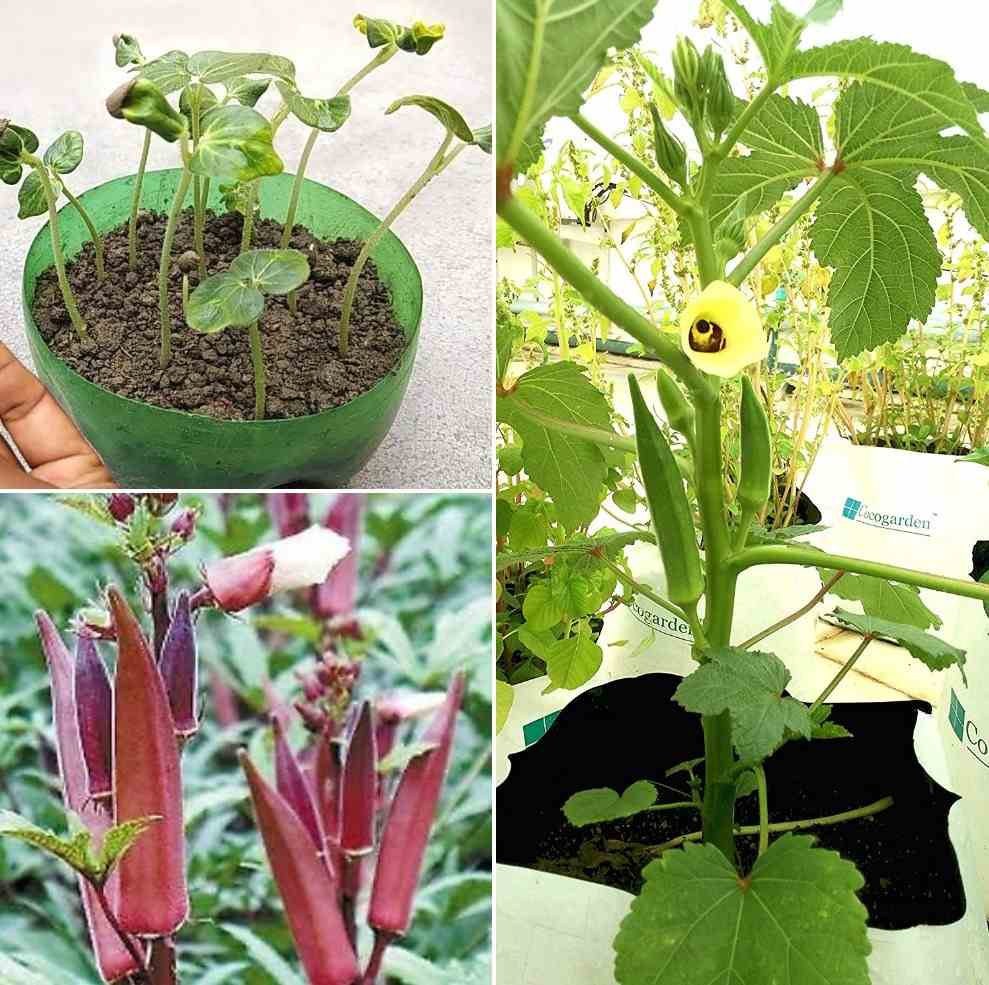
Plant okra seeds ½ to 1 inch deep and 12 to 18 inches apart in a row. You can soak the seeds overnight in tepid water to help speed up the germination process. Okra plants are tall, thus space out the rows 3 to 4 feet apart.
Okra plant is a heat-loving plant, growing best in southern climates in a well-draining, light sandy to medium loams. Soils must be high in organic matter with a pH between 5.8 to 6.8. The plant must be grown in an area of high sunlight and grows best in hot temperatures. Soil temperatures must be at least 18.3°C (65°F) with optimal growth of the plants occurring at soil temperatures between 23.9 to 32.3°C.
Okra is normally propagated from seed. Soaking seeds in water overnight before planting helps the okra plants to germinate. If okra growing in a home garden, seeds must be sown at a depth of 2.5 cm (1 in) leaving 25 to 45 cm between rows only after the soil has reached a temperature of 18°C (65°F). Okra grows best in light, and deeply worked soil rich in organic matter. And add aged compost to the planting bed before sowing or transplanting.
You should not miss the How to Grow Aloe Vera from Cuttings in Pots.
The okra seeds germinate in 2 to 12 days. Okra plant will grow in many soil types, so mulch and fertilize as needed. Once the okra plants start to grow, thin them so they are spaced 12 to 18 inches apart.
Keep the home garden weed-free; mulch to suppress weeds. Side dress okra plant with aged compost after planting and again when plants start to set pods. And keep okra evenly moist, it can go nearly but not completely dry.
Okra blossoms can start appearing in 7 or so weeks when conditions are good. The blossoms are there for only a day and hope you have a lot of natural pollinators at work and the pods are visible soon after. Then they’re picked, the better, though well-cared-for plants will keep their pods tender for 5 days or more. Larger varieties retain their tenderness until they reach the full size which can be as much as 6 inches or more.
Common pests and their effects in lady finger plant
Okra plays host to a few common pests, such as corn earworm, aphids, flea beetles and green stinkbugs. Corn earworms are 1 1/2-inch-long caterpillar that feeds on several different plants. These pests are known as tomato fruit worms, pod worms, cotton bollworms, and vetch worms. Flea beetles are very small, flea like beetles and are shiny bronze, green or black. Aphids are small insects that are yellow, green, blue, black, brown or pink. Ants on okra are often deliberately bringing aphids, so they’re a danger sign. Green stinkbugs contain five-sided, shield-shaped bodies. Aphids and stinkbugs suck the sap from okra plant, while corn earworms eat the fruit and leaves and flea beetles chew small holes in the leaves.
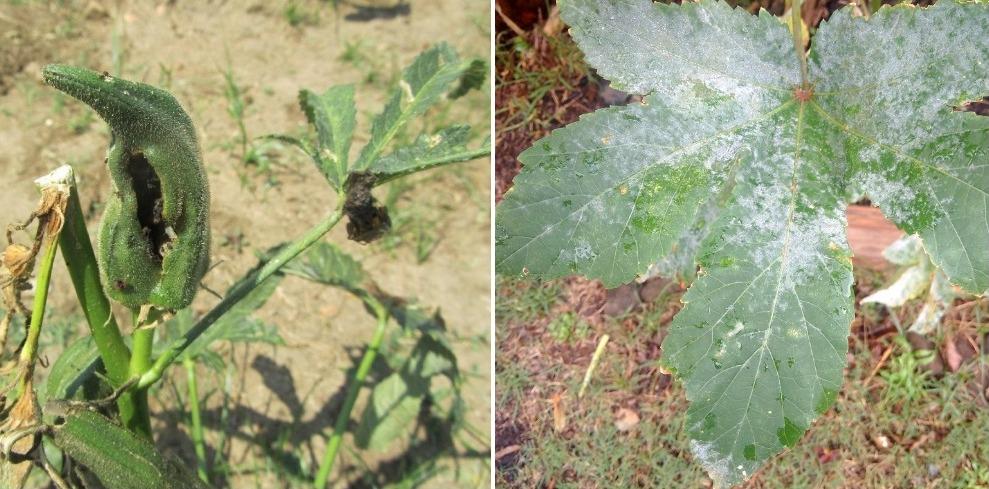
Control methods for lady finger/Okra diseases and pests
Biological controls of lady finger plant diseases
Natural predators abound if they are not killed by pesticides. Some of the natural predators of okra pests contain lady beetles, lacewings and parasitic wasps. Clover, alyssum, and parsley will help attract beneficial insects to the garden. Biological remedy to protect okra crop is Bacillus thuringiensis is also called Bt, a natural bacteria that attacks and kills many insects.
Natural insecticides of lady finger plant diseases
Insecticidal soap is a natural insecticide that will kill many of the pests on your okra plant. And you can buy insecticidal soaps and horticultural oils at garden centers. Neem oil is another readily obtainable choice. To make a homemade pesticide for okra plant, mix 2 tablespoons of dye- and fragrance-free vegetable-based liquid soap, which is castile soap, with 1 gallon of water and spray your okra.
You may also like the Pests of Snake Gourd and Control Methods.
Identification diseases of lady finger/okra and their control
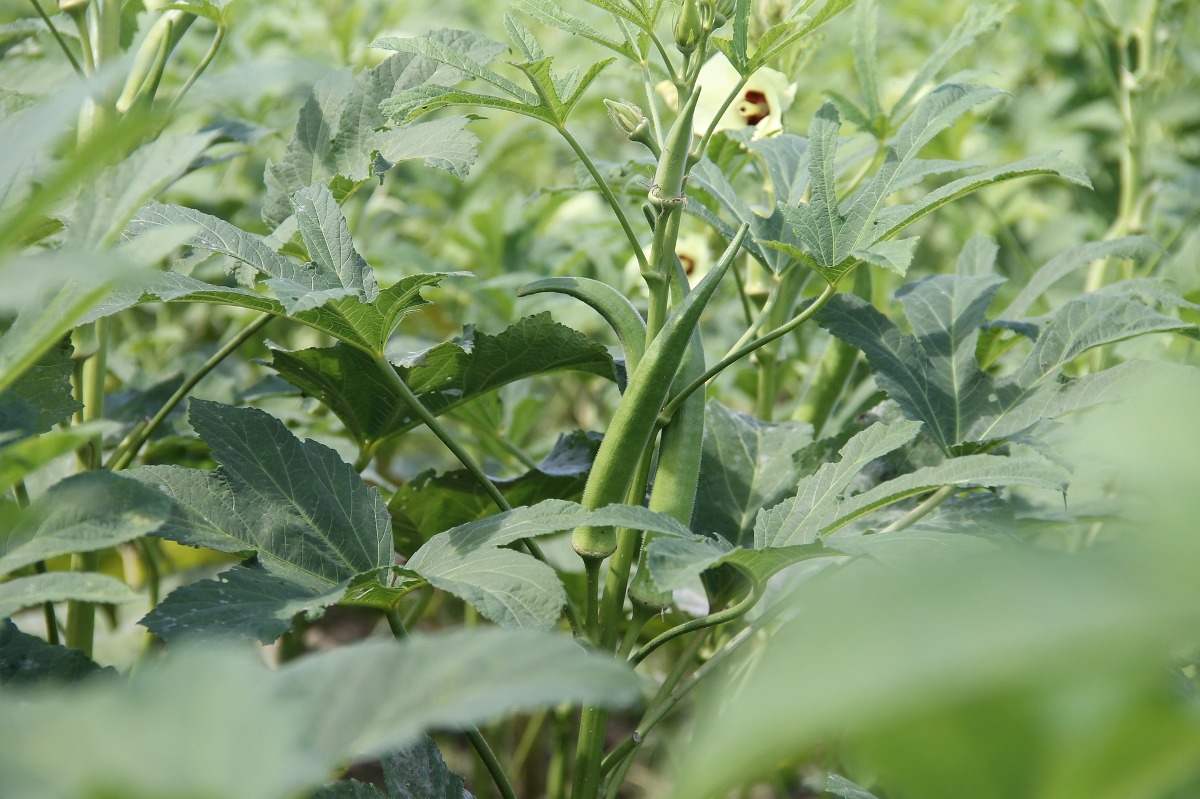
Charcoal rot
Symptoms – The main symptoms are discoloration of stem at soil line; leaves can wilt and drop from the plant; numerous small black sclerotia (fungal fruiting bodies) develop in affected tissues and used to diagnose the disease. The fungus had a wide host range and affects mainly beans, tobacco, soybean, pigeon pea, and many other crops; the disease is primarily spread by microsclerotia in the soil.
Management – Rotate crop to non-host to decrease the build-up of inoculums in the soil; avoid water stress to plants by irrigating when necessary.
Damping off on okra plant
Cool, cloudy weather, high humidity, wet soils, compacted soil, and overcrowding particularly favor the development of damping-off. Damping-off kills seedlings before or after they emerge. Infection before seedling emergence results in poor germination. If the decay is after seedlings emergence, and they fall over or die which is referred to as “damp-off.” Seedlings that emerge increase a lesion near where the tender stem contacts the soil surface.
Control – Excessive irrigation must be avoided to reduce humidity around the plants. The field must be regularly inspected for the disease-affected seedlings. Such seedlings should be removed and destroyed.
Powdery mildew of okra plant
The disease is found on the older leaves and stems of plants. Plant yields of many of the infected vegetables are reduced due to premature foliage loss. Increased humidity could increase the severity of the disease, and infection is enhanced during periods of heavy dew. The disease powdery mildew symptoms appear as subtle, small, round, whitish spots on leaves and sometimes stems. Young leaves are immune. These spores are simply blown by winds to nearby susceptible plants. Extensive premature defoliation of the older plant leaves can ensue if the disease is not controlled.
Control – Healthy, vigorous leaves and plant stems are less prone to infection. Plants under nutritional stress in most cases will increase powdery mildew much sooner than plants the same age grown under a good nutritional program. Hence the plant must be well manured and the application of fertilizers must be done based on standard recommendations. Application of Wettable Sulphur (0.2%) or at an interval of a 1-week interval efficiently controls the disease.
White mold of okra plant
Symptoms – The main symptoms of white mold are lowers covered in white, cottony fungal growth; small, circular, water-soaked lesions on pods leaves which enlarge and slimy; cottony white growth can be visible on lesions during periods of high humidity; the death of branches and the entire plant.
Management – Avoid excessive nitrogen fertilizer and use wide row spacing.
Enation leaf curl disease
Symptoms – On the lower surface of plant leaves we will see small pinhead enations. This enation becomes warty and rough in the structure at a later stage and reduces in leaf size. The stem and leaf petioles become twisted along enation. Leaves appear thick and also leathery.
Management – Remove the infected plant and burn them to avoid the spread of disease. And use yellow sticky traps to monitor the whiteflies population.
You may also like the Tomato Plant Spacing in Containers.
Identification pests of lady finger/okra and their control
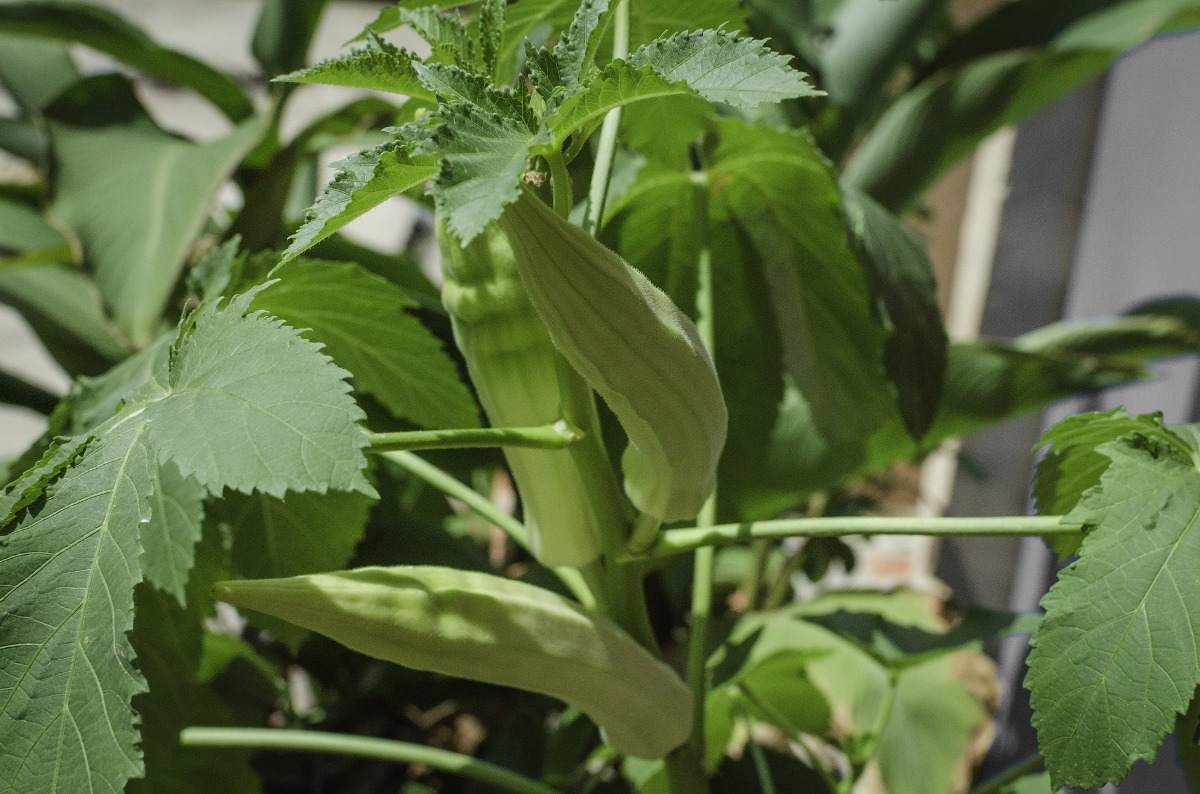
Spotted boll worm
The larvae of this moth attack the shoots of okra plants by boring into it. It bores into the fruits which are rendered unfit for human consumption.
Jassid
The adults and nymphs of this insect feed on the okra plants by sucking the sap. Plant leaves turn pale and curl upwards. The cupping can be followed by drying of leaves from the margins giving a characteristic symptom known as hopper burn. Both spotted boll-worm and jassid attack the plant from May to September.
Control – For controlling both pests spray at fortnightly intervals with 500 ml Malathion 50 EC in 100 to 125 liters of water per acre. Picking of fruits must be done before spraying. Borer infested fruits if any must be removed regularly and buried deep.
Spider mites of okra plant
The okra plants are considerably damaged and weakened and the adults and nymphs suck the plant sap. In severe cases, the plant leaves dry up and fall off.
Control – The crop must be sprayed with 250 ml of Metasystox 25 EC or Rogor 30 EC in 125 liters of water.
Loopers of okra plant
Symptoms – Caterpillars are pale green with white lines running down either side of their body; caterpillars are distinguished by the way they arch their body when moving; eggs are laid singly, generally on the lower leaf surface close to the leaf margin, and are white or pale green. Insects overwinter as pupae in plant debris in the soil; adult insect id a dark-colored moth; caterpillars have a wide host range.
Management – Larvae could be hand-picked from the plants; an organically acceptable control process is the application of Bacillus thuringiensis which kills younger larvae; chemical sprays can damage populations of natural enemies and should be selected carefully.
Incase if you miss this: How to Protect your Garden from Rats, Mice and Rodents.
Aphids of okra
Symptoms – Small soft-bodied insects on underside of leaves and stems of plant; generally green or yellow, but may be pink, brown, red or black depending on species and host plant; if aphid infestation is heavy it can cause leaves to yellow and distorted, necrotic spots on leaves and stunted shoots; aphids secrete a sticky, sugary substance known as honeydew which encourages the growth of plants.
Management – If aphid population is limited to just a few leaves or shoots then the infestation can be pruned out to give control; check transplants for aphids before planting; use tolerant varieties if obtainable; reflective mulches such as silver-colored plastic could deter aphids from feeding on plants; insecticides are only required to treat aphids if the infestation is very high – plants generally tolerate low and medium level infestation; insecticidal soaps or oils such as neem or canola oil are the best methods of control; always check the labels of the products for usage guidelines before use.
Root-knot nematode of okra
Symptoms – Galls on roots can be up to 3.3 cm (1 in) in diameter but smaller; reduction in plant vigor; yellowing plants which wilt in hot weather. Galls can appear as quickly as a month before planting; nematodes prefer sandy soils and damage in the garden with this type of soil is most likely.
Management – If symptoms indicate nematodes; solarizing soil can reduce nematode populations in the soil and levels of inoculums of many other pathogens.
Corn earworm
Symptoms – Larvae damage plant leaves, buds, flowers, and pods; young caterpillars are cream-white with a black head and black hairs; older larvae can be yellow-green to almost black with fine white lines along their body and black spots at the base of hairs; eggs are laid singly on both upper and lower leaf surfaces and initially creamy but develop a brown-red ring after 24 hours and then darken before hatching. The adult insect is a pale green to tan, medium-sized moth; the insect is damaging pests of corn; insect overwinters as pupae in the soil.
Management – Monitor plants for eggs and young larvae can be damaged by chemicals; Bacillus thuringiensis can be applied to control insects on organically grown plants; appropriate chemical treatment can be required for control in commercial plantations.
Other measures for lady finger okra plant pests
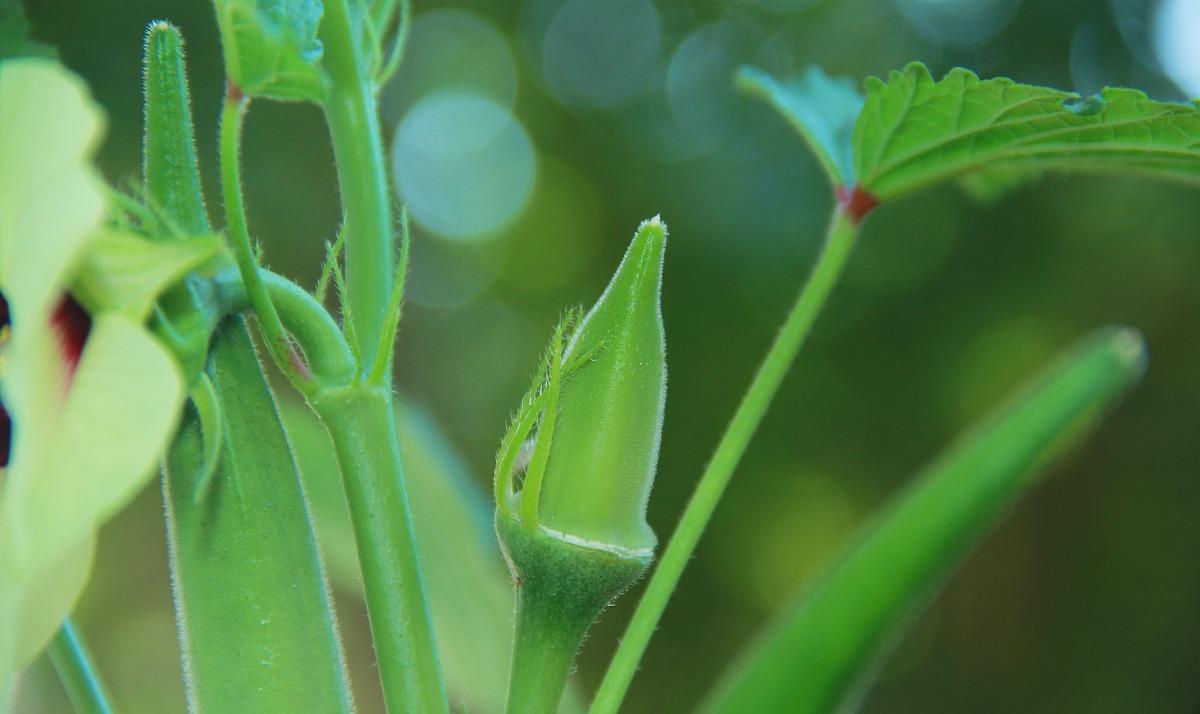
Flea beetles and aphids will be knocked off your okra plant with a strong, steady stream of water. Planting trap plants somewhat close to your garden will attract these pests and help keep them away from your okra. Bok choy and radishes work as trap plants for flea beetles. For stinkbugs, control any weed patches near garden or wild fruits as these attract these pests. Diatomaceous earth is powdery material with microscopic sharp edges that cut into soft-bodied insects that are flea beetles and aphids. Sprinkle it around plants to kill various pests without harming yourself or your okra.
That’s all veggie gardners about lady finger plant diseases, pests and thier control methods. You might be interested in Post Harvesting Technology of Vegetables.